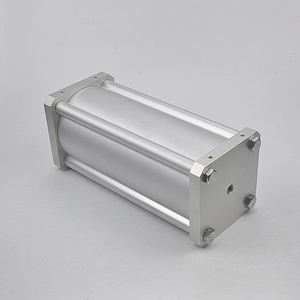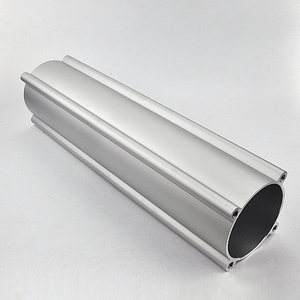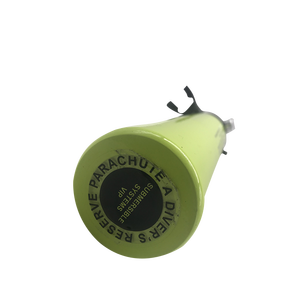(2805 products available)











































































































































































































































There are several types of the aluminum portable air tank available for buyers to choose from, each suited to a particular application.
Pressurized Air Storage Tanks
Also known as pressure vessels, they store compressed air sourced from a portable air compressor. When the compressor isn't running, the compressed air is released by the tank. These are usually found in industries that make use of high-compressor demands continuously.
Gravity-Fed Air Tanks
An air compressor is used to feed compressed air into this tank. When the air compressor stops working, the tank releases the stored air pressure. The tanks are often used in automotive applications, particularly for air tools with variable air demands.
Inline Air Tanks
Also referred to as inline reservoirs or inline dampers, these function as dampers to paddle moisture and bear pressure fluctuations in an air tool or cylinder. In automotive uses, they help compress cylinders and speed up the flow of compressed air to air tools.
Mini Air Tanks
Also known as micro or smaller air tanks, these are suitable for compact setups or light-duty applications in cars and motorcycles. Despite their small size, they can still release air pressure quickly and are useful in automotive systems that work with cylinders.
Some key specifications and features of a typical aluminum air pressure tank are:
Depending on the design and purpose of the aluminum portable air tank, its maintenance will vary. However, here are some general aluminum portable air tank maintenance tips.
Portable aluminum air tanks can be applied in many industries including construction, automotive, and manufacturing. In the following part, some key applications of air tanks will be introduced.
Car Tires and Refueling
The automotive aluminum air tank provides a portable source of compressed air. It is commonly used for tire inflation. The portable air compressor takes the tank as an air source, which enables users to inflate tires quickly and easily. Additionally, the aluminum air tank can also be used for refueling applications. It supplies compressed air to clean and dry the surfaces before painting. This avoids the risks associated with using compressed gas generated by air compressors.
Powering Pneumatic Tools
Portable aluminum air tanks store compressed air that powers various pneumatic tools. Examples like nail guns, spray guns, wrenches, and sanders. Nail guns powered by air tanks have quicker recharge times. That improves efficiency when driving nails into different materials. Additionally, spray guns powered by air tanks give users more control when painting objects. This helps achieve a fine and smooth coating. Air-powered wrenches can take torque output from air tanks. This allows users to loosen or tighten nuts and bolts quickly. A portable air tank is a great choice for supplying air for these tools.
Equipment Maintenance
In workshops, air tanks are good options for routine and equipment maintenance. Tanks that hold compressed air offer a mobile source. This makes it easier to clean tools and equipment with air nozzles. Compressed air can remove dust, debris, and contaminants from surfaces and intricacies. Especially those hard-to-reach areas. Besides, air tanks also allow users to make minor adjustments and perform quick repairs efficiently.
When choosing an aluminum air tank, certain features need to be considered to ensure that the tank will most efficiently serve its intended purpose.
Capacity
The capacity of a portable air tank is determined by its dimensions and is measured in gallons. The typical range of capacities available is from 1-gal tanks to 5-gal tanks, which are more common than larger tanks. Selecting a tank with a suitable capacity ensures it can store sufficient compressed air for one's needs and align with usage requirements.
Pressure Rating
An air tank's pressure rating indicates how much pressure it can handle safely. This rating is crucial because working with high-pressure air can be dangerous. It's essential to select an air tank whose pressure rating matches or exceeds the tools and equipment's requirements to prevent any risk of air tank failure or air leakage.
Valve System
An air tank typically has one or more valves used for air inflow and outflow. These valves control the movement of air into the tank for compression and the release of compressed air whenever needed. The valve system's design affects the air tank's compatibility with compressors and tools.
Manifold/Regulator
The air tank's manifold directs the flow of air from the air compressor to different hoses. On the other hand, the air regulator controls the amount of compressed air released from the tank. The presence and design of manifolds and regulators can influence how the air is distributed and the pressure of the released air.
Fitting & Hose
Hose fittings connect air tools and equipment to the air tank. They determine the ease of making secure connections between the air tank and other tools. Choosing appropriate hose fittings ensures smooth and effective communication between the air tank and various air-powered tools.
Construction
The construction of an air tank affects its strength, durability, and ability to tolerate high pressure. Materials used in tank construction determine its performance and reliability under demanding conditions.
Q1: What is an aluminum air tank used for?
A1: An aluminum air tank is used to store compressed air. It acts as a storage unit for air pressure, which can be used later for different purposes. The portable air tank is used widely in the automobile industry.
Q2: Does an air tank need a check valve?
A2: A check valve is not mandatory. The air compressor may have a built-in check valve that stops air from escaping back to the compressor. But in some situations, a separate check valve may increase performance.
Q3: What happens if an air tank is too full?
A3: Overfilling the air tank may cause it to burst or explode. This can be extremely dangerous for the people nearby. It is imperative to follow the manufacturer's instructions and know the limitations of the air tank.